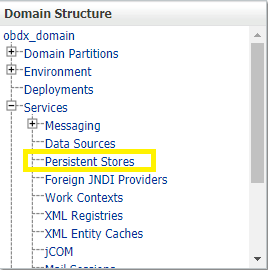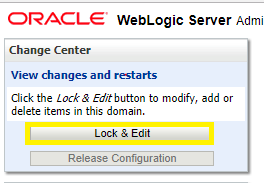3.1 Introduction and Definitions
A JMS queue in Weblogic Server is associated with a number of additional resources:
JMS Server
A JMS server acts as a management container for resources within JMS modules. Some of its responsibilities include the maintenance of persistence and state of messages and subscribers. A JMS server is required in order to create a JMS module.
JMS Module
A JMS module is a definition which contains JMS resources such as queues and topics. A JMS module is required in order to create a JMS queue.
Subdeployment
JMS modules are targeted to one or more WLS instances or a cluster. Resources within a JMS module, such as queues and topics are also targeted to a JMS server or WLS server instances. A subdeployment is a grouping of targets. It is also known as advanced targeting.
Connection Factory
A connection factory is a resource that enables JMS clients to create connections to JMS destinations.
JMS Queue
A JMS queue (as opposed to a JMS topic) is a point-to-point destination type. A message is written to a specific queue or received from a specific queue.
The objects used in this example are:
Table 3-1
| Object Name | Type |
|---|---|
| ExtXfaceJMSServer | JMS Server |
| extXfaceJMSModule | JMS Module |
| extXfaceSubdeployment | Subdeployment |
| ReceiverQCF | Connection Factory |
| ReceiverQueue | JMS Queue |
- Configuration Steps-The following steps are done in the WebLogic Server Console,
beginning with the left-hand navigation menu.
Create Persistent store-
- Here you have to Create a new persistent store (Once the persistent store is created that can be used for both sender and receiver serever. Hence there is no nedd to create a different persistent store for two different servers.) Hence Before creating a JMS server you need to create the Persistent store if its not already created. Follow the steps shown below for creating a persistent store.
- Select Services → Persistent Stores.
First Select Lock & Edit as shown-
- Select new and the select create FileStore from the list as
shown below-
- Give the name of the filestore. Example- EndPointFS and the Directory location, example /scratch/obapi/wls. Directory location field is optional and the path given above is just an example , it may vary according to the server.
- Click Next.
- Select the target server as shown in following
snapshot-
- Click Finish.



